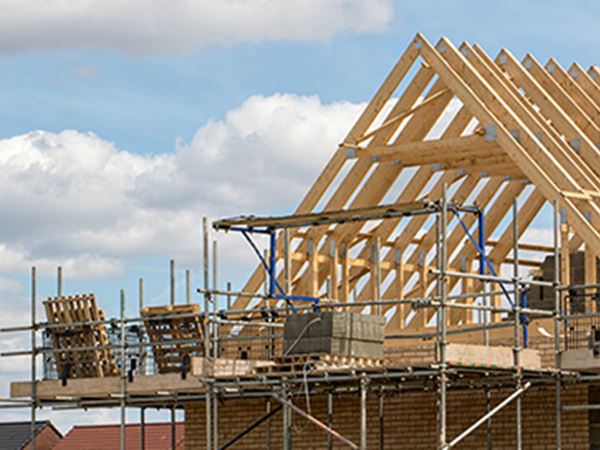A severe shortage of homes is forcing 130,000 families in England to squeeze into one-bedroom flats, according to a new report from the National Housing Federation.
The research from the National Housing Federation – which represents housing associations in England, not-for-profit landlords to more than six million people – reveals that more than one in ten children in England are living in overcrowded homes. This comes to a total of around 1.3m children from more than 600,000 families, who are stuck in overcrowded conditions because there is nowhere else for them to live. Overcrowding in England has now reached record levels (1), as around 96,000 more children are living in overcrowded homes compared to a decade ago.
Homes are said to be ‘overcrowded’ if a child has to share their bedroom with two or more other children, sleep in the same room as their parents, or share with a teenager of the opposite sex.
The new report in to the shocking state of overcrowding also includes a poll, carried out by ComRes for the National Housing Federation, showing the terrible living conditions overcrowded families often experience:
- Just under half of children in overcrowded homes are forced to share a bedroom with their parents – this could affect as many as 627,000 children.
- In more than a quarter of overcrowded homes, children even have to share a bed with a parent or sibling – this could affect as many as 368,000 children.
- More than a quarter of parents in overcrowded homes are often forced to sleep in kitchens, bathrooms or hallways because of the lack of space – this could affect as many as 380,000 people.
- More than half of parents in overcrowded homes worry that their children aren’t coming home because of how overcrowded it is – this could affect as many as 695,000 children.
- Around half of children in overcrowded homes struggle to do their homework because of the lack of space – this could affect as many as 750,000 children. This includes 14% (as many as 190,000 children) who find it totally impossible.
The main cause of overcrowding is the stark lack of housing in England, especially social housing, which means growing families have nowhere affordable to move to. The country needs around 145,000 new social homes every year, including 90,000 for social rent (3) . Last year only 6,000 social-rented homes were built, as a result of sharp Government cuts to funding for new social housing in 2010.
As well as overcrowding, the current desperate shortage of social housing is having a serious impact on millions of people’s lives. Rough sleeping has increased by 165% since 2010, while the number of households in temporary accommodation is at a ten-year high. Meanwhile, more people are being pushed into expensive and insecure private renting, including 1.3m children currently growing up in poverty in privately rented homes. Many more people are stuck at home with their parents, unable to build independent lives and start families of their own.
The National Housing Federation is calling on the Government to invest £12.8bn every year for the next decade in building new social homes, bringing spending levels back to those last seen under Churchill’s government in the early 1950s. This would effectively end the housing crisis, kick starting a nationwide housebuilding boom of around 145,000 new social homes to rent and shared ownership properties to buy every year.
Kate Henderson, Chief Executive of the National Housing Federation, said:
“This research shows yet another devastating impact of the broken housing market. All across the country, whole families squeeze into one-bedroom flats, children sleep three to a bed, and parents are forced to spend their night in the kitchen or a hallway.
“This is having a huge impact on more than a million children, seriously affecting their start in life. For decades, successive governments have failed to invest in social housing, and families are paying the price.
“The only way to fix the problem is by building enough social housing, which requires a radical public spending programme – there is simply no other way. By investing £12.8bn in affordable housing every year, the Government can finally put an end to the country’s housing problem.”
ENDS
For further information please contact:
Andrew Carruthers, Press Officer, National Housing Federation
andrew.carruthers@housing.org.uk, 020 7067 1098, 07826 533 623 (out of hours 020 7067 1146)
Notes for Editors
Research
To establish the scale of overcrowding, we looked at English Housing Survey (EHS) data for 2016/17. At the time of writing this was the latest data available. We focused our analysis on families. For the purposes of this analysis we defined a family as a household including one or more dependent children. This produced a total number of children in overcrowded homes – 1.36m. Comparing this with the number of children in all households (11.76m) allows us to express the former as a percentage of the latter, at 11.6%. Cross-referencing the overcrowding figures with property sizes showed that there are 132,318 overcrowded families living in one-bedroom properties – these households contain 165,315 children.
To supplement our analysis of the EHS, we engaged ComRes to conduct a survey of households living in overcrowded homes, asking questions about the impact that overcrowding has on their lives. This reached 102 households, given the difficulty of engaging with households in this position. Percentages of responses were applied to the headline totals of households, children and people obtained from the EHS analysis. Full briefing available here.
The National Housing Federation
The National Housing Federation is the voice of affordable housing in England. We believe that everyone should have the home they need at a price they can afford. That’s why we represent the work of housing associations and campaign for better housing.
Our members provide over two and a half million homes for six million people. And each year they invest in a diverse range of neighbourhood projects that help create strong, vibrant communities.
References
(1) English Housing Survey 2017-18 Annex table 1.21.
(2) This description of the Bedroom Standard - and how it is calculated for the purposes of the English Housing Survey - is taken from House of Commons Library Briefing Paper 1013, Overcrowded housing (England), published October 2018:
“A standard number of bedrooms is allocated to each household in accordance with its age/sex/marital status composition and the relationship of the members to one another. A separate bedroom is allocated to each married or cohabiting couple, any other person aged 21 or over, each pair of adolescents aged 10-20 of the same sex, and each pair of children under 10. Any unpaired person aged 10-20 is paired, if possible, with a child under 10 of the same sex, or, if that is not possible, he or she is given a separate bedroom, as is any unpaired child under 10. This standard is then compared with the actual number of bedrooms available for the sole use of the household and differences are tabulated. Bedrooms converted to other uses are not counted as available unless they have been denoted as bedrooms by the informants; bedrooms not actually in use are counted unless uninhabitable.”
(3) Housing supply requirements across Great Britain.












